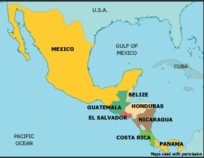Mirroring a national trend of K-12 students, in 2020-21 Nassau-Suffolk school year, white student population fell to 47.6%, Asian students outnumbered Black students whose enrollment declined to only 9%....DEI (Diversity, Equity, and Inclusivity) policies have been adopted by school boards, lesson plans are being changed...Westbury school board…added Muslim holidays Eid al-Fitr and Eid al-Adha to the district’s 2022-23 school calendar….An English teacher at Jericho High School, said she began assigning reading materials from Asian authors around 2006 after seeing her classroom change. “I would move away from some of the canon of the old white men in American and British literature.””…[So if large numbers of American students showed up in Saudi Arabia schools, Saudis would add Christmas and Thanksgiving to school holidays, remove “old” Saudi authors from the curriculum and add American authors?]
5/21/22, “Racial demographics rapidly shifting in Long Island schools,” Newsday, Dandan Zou
“Valley Stream 24 is one of 32 public school districts on Long Island where students of [other than Black] color shifted from being the minority to the majority in the past 20 years. Newsday’s Shari Einhorn reports. Credit: Anthony Florio”
“When visitors step into William L. Buck Elementary School in Valley Stream, one of the first things they see is a circle of paper dolls pasted to the lobby walls.
The hundreds of dolls were handmade by the students at the beginning of the school year to represent themselves. Some wrote on the dolls the names of the countries of their heritage — Colombia, Bangladesh or Jamaica, among others. Many painted the American flag.
The display is meant to reflect the diversity of the student body and to make the schoolchildren see themselves in the building, Valley Stream School District 24 Superintendent Don Sturz said.
Sturz’s district is among 32 public school districts on Long Island where students of [other than Black] color shifted from being the minority to the majority over the past 20 years, a Newsday analysis of the latest enrollment data found. Fifteen districts, including Brentwood, Westbury and Freeport, had a minority-majority student body in 2000.
- Over the past 20 years, students of [other than Black] color shifted from being the minority to the majority in 32 public school districts on Long Island, a Newsday analysis found. Overall, the Island’s white student population fell to 47.6% in 2020-21.
- Educators said they are adapting by including changes to lesson plans to better reflect their students’ cultural background; expanding efforts to recruit teachers of color; establishing communications to parents in other languages, and more.
- More recently, some districts hired consultants or staff to lead diversity, equity and inclusion efforts, despite some pushback.
Overall, the data shows a rapidly changing and more diverse student population on the Island. The Island’s white student population, which was a 51.5% majority in the 2017-18 school year, dipped below half — 48.2% — in 2019-20. That decline continued in 2020-21, to 47.6%, or 197,515 students.
By comparison, nearly three out of every four students were white in 2000….
The shift in the Island’s 124 districts mirrors
a national trend of K-12 students
becoming more diverse, and reflects the overall population change locally.
Minority residents in Nassau and Suffolk counties grew
from 24% to 40% between 2000 and 2020,
an increase driven by growing Hispanic and Asian families, according to U.S. Census Bureau data.
“You’re getting a demographic shift from the baby boomers to new families moving in,” [Hofstra University professor of teaching, Alan] Singer said.
“The second issue in some areas
is the influx of Central Americans.”
 Hispanic students accounted for nearly one-third of the Island’s student body in 2020-21. Asians made up nearly 10% during the same year.
Hispanic students accounted for nearly one-third of the Island’s student body in 2020-21. Asians made up nearly 10% during the same year.
The 2020-21 school year also was
the first time in which
Asian students outnumbered Black students,
whose enrollment slowly has been declining
in percentage and number,
accounting for about 9%, or 39,195, of Island students.
Between 2000 and 2020, the overall student population also has decreased,
from 455,938 to 421,254, or 8%.
As the faces in Island schools change, educators said they are adapting to meet the needs.
Over the years, some teachers said they made changes to lesson plans to better reflect their students’ cultural background.
Some districts declared Lunar New Year, Diwali and
Eid al-Fitr official school holidays.
Many have expanded their bilingual class offerings, grown efforts to recruit teachers of color and started to send
communications to parents in English and Spanish–sometimes in a third language.
More recently, some districts hired consultants or staff to lead diversity, equity and inclusion efforts, despite some pushback.
Lester W. Young Jr., chancellor of the state’s Board of Regents, called diversity, equity and inclusion concepts “foundational to the entire education enterprise” in a speech he gave in April at SUNY Old Westbury.
“When we talk about diversity, equity and inclusion, I should see it in the curriculum materials, in the instructional approaches, in the staffing that goes on, in the kind of leadership development that goes on, right? [And] in the kinds of opportunities that we provide all students,” he told hundreds in the audience, many of whom were college students studying to become teachers.
Look through new lens
Two decades ago, Valley Stream 24’s
 white student population stood
white student population stood
In 2020-21,
About 80% of the district’s 1,044 students were children of color: Hispanics, 43%; Blacks, 21%, and Asians, 16%.
Sturz said his district began its diversity, equity and inclusion efforts a few years ago to address the changing demographics in its three K-6 schools.
A DEI [Diversity, Equity, and Inclusivity] committee was formed in December 2020. The school board adopted a DEI policy in April 2021. Two months later, the committee released a report with stated goals to increase staff diversity, expand instructional materials to reflect student backgrounds,
One session that Marc Levenson, a district music teacher, attended last October led him to consider how he could add DEI elements to his lessons, he said.
The idea came to him as he was in the session: “Why not do familiar material but in a different language?” Levenson recalled.
Levenson typically started his lessons with a welcome song in English. So the following week, he started teaching his students the same song in Spanish. He later taught the song in Italian, French and, a few weeks ago, Japanese.
“The [students’] reaction was: ‘So cool,’” Levenson said. “They were really excited about [singing in] another language.”
Sturz said the song was an example of districtwide efforts to examine practices
through the DEI lens....
“Whether it be our hiring practices, how we distribute communications to parents, the events that we create, the activities that we offer, the curriculum we choose,
everything we do we look at from a diversity, equity and inclusion perspective,” the superintendent said.
Last July, the district hired its first female Black principal, Johanne Gaddy, at William L. Buck. Within the last school year, Sturz said, five of the 11 open positions for teachers and administrators were filled by candidates of color.
Eighty-seven of the district’s 97 teachers are white. Of the 10 teachers of color, five are Hispanic, three are Asian and two are Native American, according to the superintendent.
Expanded efforts
Districts across the Island have made similar efforts on DEI, staffing and building what educators call a more inclusive school environment.
In Freeport, a 21-week Equity Challenge began April 4. Participants receive an email each week with videos and articles
to further their knowledge on DEI.
Earlier this year,
the Westbury school board appointed a director of diversity, equity, inclusion and special projects
and
added Muslim holidays Eid al-Fitr and Eid al-Adha
 to the district’s 2022-23 school calendar.
to the district’s 2022-23 school calendar.
“We recognize that
we have a growing population of
students and family who celebrate Eid,”
Superintendent Tahira A. DuPree Chase said at the Feb. 15 board meeting.
“We wanted to make sure
that we were inclusive in our calendar,” she said.
“We want to be able to demonstrate that we walk the talk and it’s not just gibberish.”
In Riverhead, the district’s DEI committee is scheduled to present a plan next month.
Riverhead is one of the districts where white students used to be the majority. The
district saw its Hispanic students increase from 347 to 3,219, or
the largest percentage increase for districts with more than 3,200 students.
Of its 5,570 students,
one out of three is learning English as a new language, Superintendent Augustine Tornatore said.
“We certainly have been talking more about supporting our [multilingual learners] population,” Tornatore said. “I don’t think that’s a conversation that’s going to be going away.”
Tornatore said he wants to incrementally expand bilingual coursework in the district’s elementary schools. He also wants to increase class offerings in English, algebra and geometry on the secondary level.
That means the district needs more bilingual teachers. “What we’re doing is, as people are retiring, we’re looking to hire bilingual teachers whenever we can,” Tornatore said.
In Brentwood, the high school’s bilingual department has tripled in size, growing from one of the smallest departments in the early 2000s to becoming one of its largest, Superintendent Richard Loeschner said.
 “When you do have monolingual speakers coming from different parts of the world,
“When you do have monolingual speakers coming from different parts of the world,
you obviously have to adjust your teaching staff,
your professional staff,” Loeschner said. “That’s what we’ve done.”
Critique on two sides
Despite what some districts touted as improvements, advocates said their
efforts are not on pace with changing needs and
are limited to cultural activities
instead of meaningful changes in staff recruitment and curriculum.
“I commend them for the efforts they have made,” said Osbourne Traill Jr., a parent who unsuccessfully ran for the Valley Stream 24 school board last year. “It’s not happening fast enough.”
Traill said his five children, who attended Robert W. Carbonaro elementary, never had a Black teacher when they were there. His youngest is now a senior at Valley Stream South High School.
“The faculty has not changed to align with the changing demographics,” said Traill, who is Black. “Something is wrong when in 20 years you don’t see a teacher that looks like you” in the elementary school.
Sturz said the district continues to work on increasing teacher diversity, but the process takes time as the district in a typical year has only a few positions open.
Minerva Perez, executive director of OLA of Eastern Long Island, which works with school districts on the East End, said more is needed to address students’ academic and other needs.
“This isn’t a sudden influx.
This is 30 years [of] gradual demographic change, and we have not been keeping pace,” she said. “What we find oftentimes is that it feels like a challenge, it feels like a problem when it should be feeling like an opportunity.”
Meanwhile, some have pushed back against
DEI, calling it biased teaching that creates division.
In Smithtown, Jennifer Bradshaw, the district’s assistant superintendent for instruction and administration who led the equity team, left her job last summer
following criticism over the equity work that she helped guide.
The 8,116-student district on the North Shore in Suffolk County has
a 79% white student body,
a decrease from 95% two decades ago.
Earlier this year, Smithtown established a new DEI committee called “Success for ALL.”
“Our work will be guided by a dispassionate, apolitical analysis as to whether or not our students are reaching the goals we have set for them,” Superintendent Mark Secaur said in a virtual presentation in January. “There will be no political agenda to advantage or disadvantage a particular group.”
In an email sent through a spokeswoman Thursday, Secaur wrote, “the formation of this committee marks a change in approach when compared to the previous team.” He said the committee will meet soon to map out the work ahead.
Kevin Smith, co-founder of Long Island Loud Majority,
said DEI work is intrinsically linked to race and highlights differences rather than what students share in common.
“There’s no reason that race has to be in the forefront of things because all you do when that happens is you artificially separate students based on race,” he said.
“There is no reason why first-graders should be focused on what makes them different. That’s a recipe for disaster.”
[Long Island] Loud Majority has been identified
as an antigovernment organization
by the Alabama-based Southern Poverty Law Center,”…
[The Alabama-based SPLC is a very rich hate group whose cash on hand is nearly half a billion dollars, $481,543,698 per its own financial statement in 2018, p. 13. Aside from that, there’s a great deal of published information “tracking” this sad group, such as, 11/26/2010, “Southern ‘Poverty’ Law Center’s Cayman Island’s Bank Account,” or Nov. 2000, “The church of Morris Dees, How the Southern Poverty Law Center profits from intolerance,” Harpers, by Ken Silverstein, Nov. 2000. Excerpt reprinted here. (Morris Dees left the company in 2019). Why would Newsday which specializes in local Long Island reporting quote a long discredited Alabama-based national “hate” group with a “hate map” instead of doing their own checking? For example, Newsday could’ve spoken with a local person in the group such as the man mentioned in their article. We also learn from Newsday that being a so-called “anti government” organization is automatically so bad that you should check with a millionaire “nonprofit” and see if the group is on their list of groups known for “racism, xenophobia and far right militias."
As to “government” per se, surely Newsday is aware that the US is in
year 3 of “emergency government,” ie, government by decree, and in this
case, with no end in sight. Indefinite suspension of normal government,
effectively converting US to a dictatorship, was accomplished by
mere decree of Trump in March 2020. This is something we once thought
could only happen in the US by foreign invasion. If you believed that
government exists only by “consent of the governed” then you’d
necessarily be “anti” the government US has today. One can only
assume Newsday is fine with government by decree and thinks anyone who
isn’t is a “racist, xenophobe, or member of a far right militia."]
(continuing): “a nonprofit that tracks racism, xenophobia and far right militias in the United States.
Tensions rise
Educators said tensions have risen as a result of DEI efforts.
“Change concerns people,” said Henry Grishman, superintendent of Jericho schools.
And now our district is changing and,
What does that mean for my kid and my family?’ ”
Of Island districts, Jericho has seen the biggest drop percentagewise in white student population since 2000. What rose was its Asian student group, which grew fivefold to 2,054. Many are of Chinese, Indian or Korean descent.
Seeing the changing student makeup in the early 2000s, Grishman said the district
established committees to better understand it.
Daborah Lee, who in 2015 became the first Asian American elected to the Jericho school board, was invited to be involved.
“When I first started, it’s a lot of the language barrier and cultural differences,” Lee said. Parents, including her at first, had
questions about things such as what to wear to a bar mitzvah.
[Are bar mitzvahs held in public schools during school hours? If not, why is this topic mentioned?]
(continuing): “Grishman said the district invited Asian parents and others to faculty meetings to talk to teachers about cultural differences.
“Initially, change brings some hesitation,” Grishman said. “However, I think
all of the benefits of our district becoming more multicultural
and how that
benefited the overall educational program.”
Suzanne Valenza, an English teacher at Jericho High School, said she
began assigning reading materials from Asian authors
around 2006 after seeing her classroom change.
“I would move away from some of the canon
of the old white men in American and British literature,” she said.
“I started including titles written by authors who were Korean and Chinese.”
Valenza has continued that practice with her creative writing classes that include food memoirs. The required reading list in her class includes “Eating the Hyphen,” an essay by Lily Wong, and excerpts from “Climbing the Mango Trees” by Madhur Jaffrey.
“If you’re going to talk about food and have people write about food in their lives, it would be irresponsible of me to do anything but
to make sure that I reflect [everybody’s culture] in the room,” she said.”
………………….
“Dandan Zou covers education for Newsday. Previously, she worked for a community newspaper in Maryland and a personal finance magazine in Washington, D.C."
....................






No comments:
Post a Comment